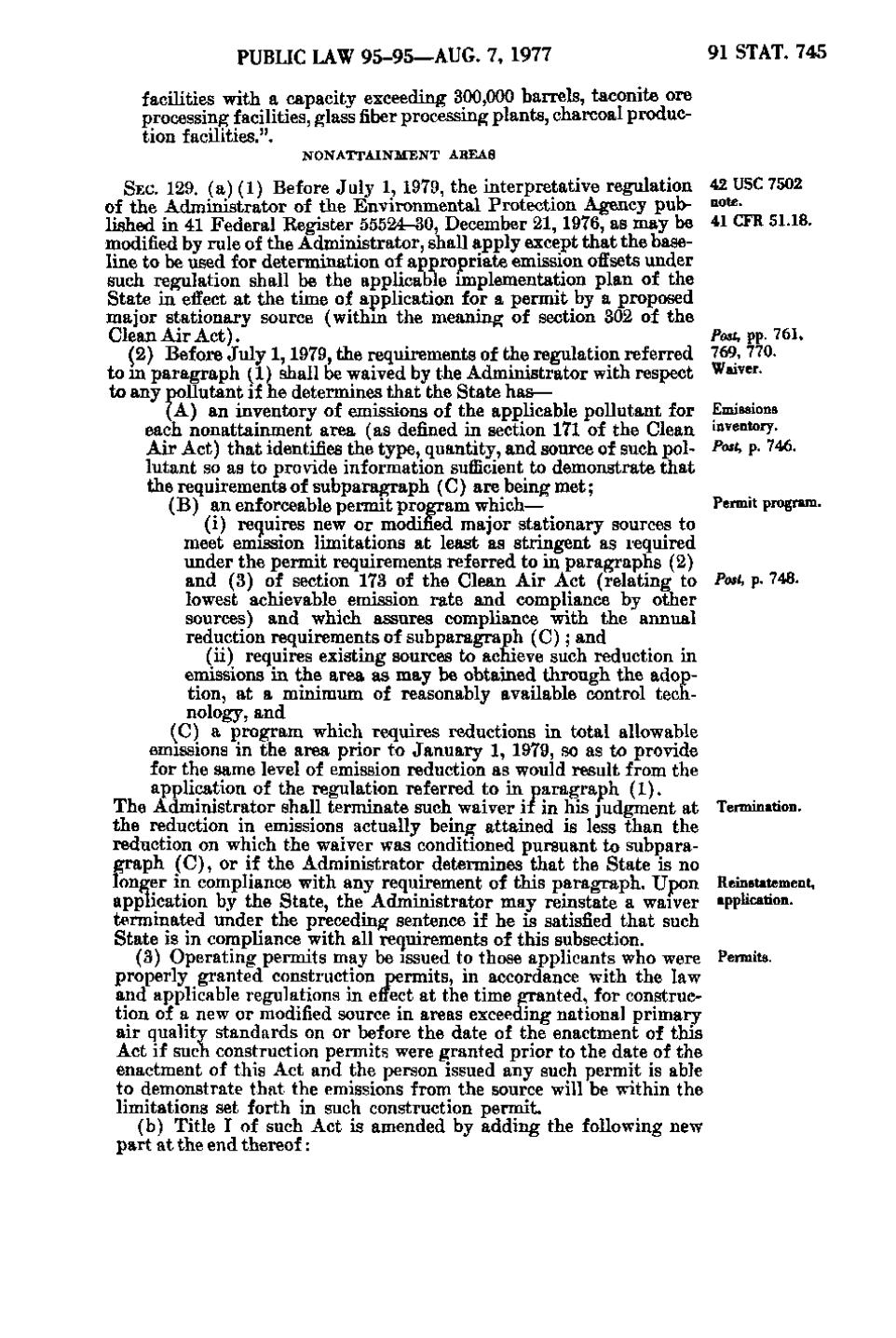PUBLIC LAW 95-95—AUG. 7, 1977
91 STAT. 745
facilities with a capacity exceeding 300,000 barrels, taconite ore processing facilities, glass fiber processing plants, charcoal production facilities.". N O N A T T A I N M E N T AREAS
SEC. 129. (a)(1) Before July 1, 1979, the interpretative regulation 42 USC 7502 of the Administrator of the Environmental Protection Agency pub- note. lished in 41 Federal Register 55524-30, December 21, 1976, as may be 41 CFR 51.18. modified by rule of the Administrator, shall apply except that the baseline to be used for determination of appropriate emission offsets under such regulation shall be the applicable implementation plan of the State in effect at the time of application for a permit by a proposed major stationary source (within the meaning of section 302 of the Post, pp. 761, Clean Air Act). (2) Before July 1, 1979, the requirements of the regulation referred 769, 770. to in paragraph (1) shall be waived by the Administrator with respect Waiver. to any pollutant if he determines that the State has— (A) an inventory of emissions of the applicable pollutant for Emissions each nonattainment area (as defined in section 171 of the Clean inventory. Air Act) that identifies the type, quantity, and source of such pol- Post, p. 746. lutant so as to provide information sufficient to demonstrate that the requirements of subparagraph (C) are being met; Permit program. (B) an enforceable permit program which— f ^ (i) requires new or modified major stationary sources to meet emission limitations at least as stringent as required under the permit requirements referred to in paragraphs (2) and (3) of section 173 of the Clean Air Act (relating to Post, p. 748. lowest achievable emission rate and compliance by other sources) and which assures compliance with the annual reduction requirements of subparagraph (C); and (ii) requires existing sources to achieve such reduction in emissions in the area as may be obtained through the adoption, at a minimum of reasonably available control technology, and (C) a program which requires reductions in total allowable emissions in the area prior to January 1, 1979, so as to provide for the same level of emission reduction as would result from the application of the regulation referred to in paragraph (1), The Administrator shall terminate such waiver if in his judgment at Termination. the reduction in emissions actually being attained is less than the reduction on which the waiver was conditioned pursuant to subparagraph (C), or if the Administrator determines that the State is no longer in compliance with any requirement of this paragraph. Upon Reinstatement, application by the State, the Administrator may reinstate a waiver application. terminated under the preceding sentence if he is satisfied that such State is in compliance with all requirements of this subsection. (3) Operating permits may be issued to those applicants who were Permits. properly granted construction permits, in accordance with the law and applicable regulations in effect at the time granted, for construction of a new or modified source in areas exceeding national primary air quality standards on or before the date of the enactment of this Act if such construction permits were granted prior to the date of the enactment of this Act and the person issued any such permit is able to demonstrate that the emissions from the source will be within the limitations set forth in such construction permit. (b) Title I of such Act is amended by adding the following new part at the end thereof:
�
